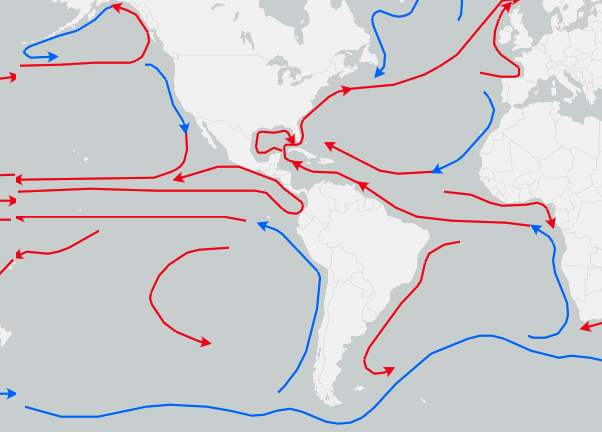This research article explores the likelihood of a collapse of the Atlantic Meridional Overturning Circulation (AMOC) within the 21st century. The authors use climate model simulations to identify optimal regions for observing early warning signals of an AMOC collapse, finding that salinity data near the southern boundary of the Atlantic is particularly informative. Applying this knowledge to reanalysis data, they estimate a 59% probability of an AMOC collapse before 2050, highlighting the need for continued monitoring of this crucial ocean current. While the analysis relies on several assumptions, it provides a more physically based approach for predicting AMOC collapse than previous methods, suggesting a potentially higher risk than currently acknowledged by the Intergovernmental Panel on Climate Change (IPCC). Scary, scary shit.
Key Findings:
- Optimal Observation Region: The study identified the salinity levels near the southern boundary of the Atlantic Ocean (specifically along the SAMBA transect at 34°S) as the most effective indicator for predicting an AMOC collapse. This finding challenges the previously held notion that the subpolar gyre is the key indicator, as evidenced by:
-
- “Our analysis of the CESM results indicates that the SAMBA (34°S) transect data, in particular the salinity, are most useful for providing (and improving the current) estimates of AMOC tipping probabilities.”
- “This result is consistent with the recently identified physics-based indicator of an AMOC collapse ( Fov at 34°S).”
-
- Tipping Time Estimation: Based on the analysis of salinity data from the ORAS5 reanalysis product, the study estimates a mean AMOC tipping time of 2050, with a 10-90% confidence interval of 2037-2064. This translates to a 59 ± 17% probability of collapse before 2050.
-
- “The mean AMOC tipping time estimate from ORAS5 is year 2050 and is robust to varying CPend (Figure 4a).”
- “The average probability of an AMOC collapse before the year 2050 is 59% with a standard deviation of 17% for ORAS5.”
-
- Early Warning Signals (EWS): The study employs a robust EWS based on the “restoring rate”, a measure of system resilience. This indicator proved more reliable than traditional EWS like variance and lag-1 autocorrelation, which are susceptible to noise in the data.
-
- “Unlike VAR and AC1, the restoring rate (see Methods) RES is less influenced by the properties of the noise, making it a more robust statistical indicator for critical slowdown detection.”
-
- Significance for IPCC Assessment: The study argues that the probability of AMOC collapse in the 21st century might be significantly underestimated in the IPCC-AR6 report, advocating for its reconsideration in the forthcoming IPCC-AR7.
-
- “Second, the probability of an AMOC collapse before the year 2100 is very likely to be underestimated in the IPCC-AR6 and needs to be reconsidered in the IPCC-AR7.”
-
Important Ideas and Facts:
- AMOC collapse would have severe global climate consequences, including shifts in tropical rain belts, sea-level changes, and significant cooling in Northwestern Europe.
- Traditional AMOC monitoring has relied on the RAPID transect at 26°N and subpolar gyre SST data. This study highlights the importance of the SAMBA transect at 34°S for more accurate risk assessment.
- While the research acknowledges limitations due to reliance on climate models and relatively short observational records, it underscores the urgency of continued monitoring and potential policy implications.
Next Steps:
- Continuous monitoring of the SAMBA transect is crucial for refining AMOC collapse probability estimates.
- Further research is needed to investigate the potential overshoot effect, non-linear future forcing, and the influence of different reanalysis data products on tipping time predictions.
- The findings warrant serious consideration in the upcoming IPCC-AR7 report, potentially leading to a reevaluation of AMOC collapse risks and their implications for climate change mitigation strategies.
Overall, the study presents a compelling case for the increased likelihood of an AMOC collapse in the 21st century, emphasizing the need for continued research and potential policy adjustments in response to this evolving risk.



Leave a Reply